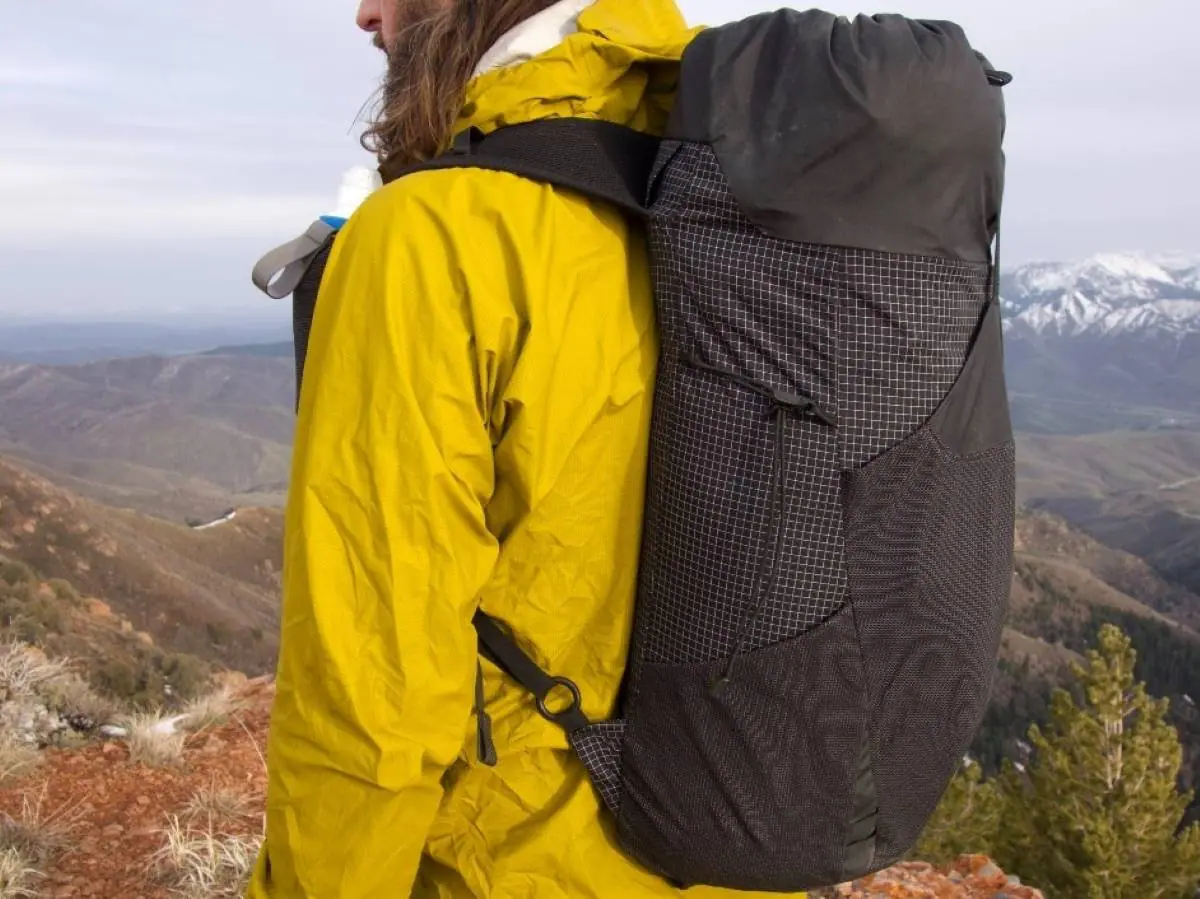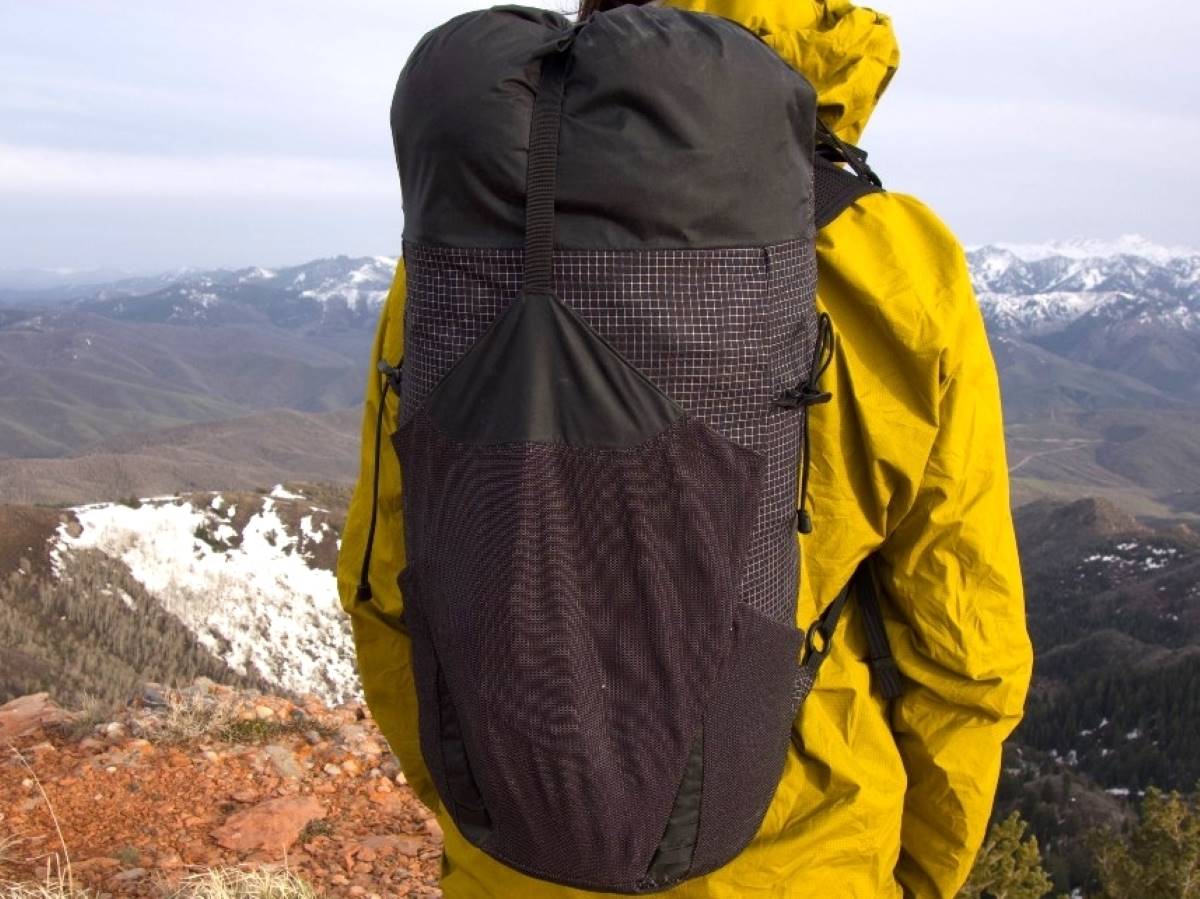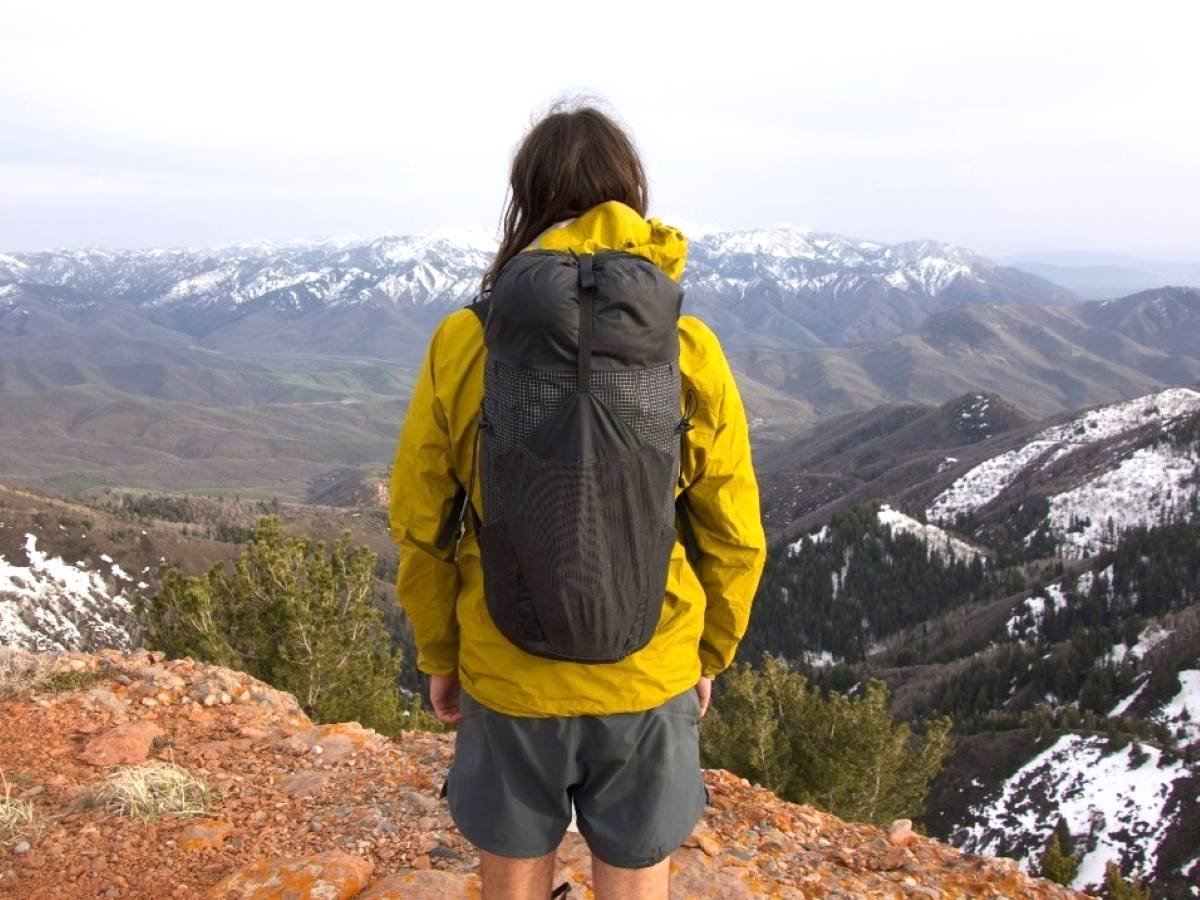The Pa’lante Packs Joey ($240) is a fastpack made for those shorter fastpacking trips when you feel determined to get into the deepest reaches of the mountains or the most secluded basins, but you only have so much time. It is a 24-liter fastpack with a running vest-style harness that weighs between 13.9 and 14.8 ounces, depending on materials. It is available in one size, an 18-inch torso length.
The iRunFar team has tested the Joey for over a year, and found it to perform well for everything from quick overnighters in our neighborhood wilds to four-day fast-moving stints in remote wilderness areas. So long as your fastpacking kit is dialed in to both an ultralight weight and small volume, the Joey will take you pretty far. We love the Pa’lante Packs Joey so much that we named it as the best overall fastpack in our best fastpacking packs guide.
We all appreciate the limited capacity of the Joey, as it keeps loads small enough for running. The feature set is minimal but sufficient, the construction is solid but light, and the vest-style harness makes this pack exceptionally runnable.
The Pa’lante Packs Joey is designed in Salt Lake City, Utah, and manufactured in Vietnam in small batches, so its availability comes and goes. Be sure to sign up for their newsletter if you don’t want to miss the next drop.
Shop the Pa’lante Packs JoeyPa’lante Packs Joey Harness and Runnability
The Pa’lante Packs Joey’s harness is designed like a traditional running vest, with the shoulder straps constructed from two layers of three-dimensional mesh instead of being highly padded like a traditional S-strap on a hiking pack. The shoulder straps are four inches wide to distribute pressure across your back, shoulders, and chest.
Characteristic of a running vest, the straps connect to each other behind your neck before they connect to the pack. This creates an upside-down U-shaped vest rather than individual straps, and snugs the pack into your upper torso. Two small straps between the shoulder straps clip around the upper chest and just below the sternum to secure the vest to your torso. This pack has no waistbelt, more proof that it’s designed for very low weights.
We’ve used the Joey on trips where our pack weight crept up toward a weight of about 15 pounds. The harness remained comfortable with this load, effectively distributing pressure across the shoulders, chest, and upper back. We have experienced no shoulder pain when carrying about 15 pounds, but all the testers agreed that 15 pounds is a little much for running with the Joey because it causes it to bounce too much to be comfortable. When you drink some water and eat some food and your pack weight dips into the 12-pound range, then you can easily jog down the trail.
To our immense surprise, none of us missed the waistbelt on the Joey because the harness was secure enough to keep the load from jostling from side to side very much. The lack of a waistbelt — along with the 24-liter capacity — puts an automatic limit on this pack, so when we want to go out for more than just a night or two, we reach for a higher capacity pack with a waistbelt such as the YAR.gear Mountain Drifter 38L or the Mountain Laurel Designs Exodus 55. For longer trips, we also recommend the Red Paw Packs Flatiron 28L, which we have found to be much larger than 28 liters when fully loaded — check out our Red Paw Packs Flatiron 28L review.
Pa’lante Packs Joey Materials
The 2022 Pa’lante Packs Joey is available in either 100-denier Robic brand nylon or 210-denier nylon with a UHMWPE (ultra-high molecular weight polyethylene) gridstop woven throughout. The Robic packs are slightly lighter and are either all black or black/powder blue.
The gridstop packs are slightly heavier, a bit more durable, and are either all black or eggplant purple/powder blue. We have tested both the Robic and gridstop versions of this pack and have seen no obvious differences yet, but we do suspect that the gridstop packs will be better suited to bushwhacking.
Pa’lante Packs Joey Storage Options
The Pa’lante Packs Joey’s main compartment is a typical tube-shaped rucksack made to carry everything you need for a fast and light couple of nights out. A sleeping bag fits vertically with a pad, tarp, and clothing packed in around it. We found it to be large enough for a full three-season kit, including a sleeping bag, pad, tarp, stove, clothing layers, four days of food, and other small accessories, but not much more. But that’s one thing we iRunFar testers like about this pack — it limits us to weights that actually allow us to run.
The body of the Joey features two small side water bottle pockets, one underneath pocket, and one big rear pocket. All of these are made from a material called UltraMesh — a durable, stretchy material meant to be tougher than Lycra or stretch woven mesh. The side bottle pockets can hold small water bottles and, utilizing the shock cord above them, can securely hold trekking poles too.
The mesh is tight, sitting flat against the pack when not in use, so these pockets aren’t large enough for Nalgenes or two-liter Platypus bottles. This could be viewed either as a flaw or another welcome limitation. We choose to see it as the latter.
The underneath pocket accommodates items such as Buffs, gloves, jackets, and snacks. The large rear pocket seems like an ideal place for extra layers you may be taking off and putting back on all day long, like wind and rain jackets. It is also tight, but with a little effort, we were able to fit a full two-liter Platypus bottle and a rain jacket in there.
The Joey’s vest has two shoulder-strap pockets on each side, also made of UltraMesh. One bottle pocket on the upper part of each strap fits short and wide 500-milliliter soft flasks, but not the taller and narrower soft flasks, which will stick out unless you drink some water.
We personally would like the pockets to be a little taller to accommodate a wider array of soft flasks. Just beneath the soft flask pockets, there is a smaller snack pocket, which also can hold a phone if you don’t mind it poking out the top. We found these to be most useful for storing bars and other small snacks.
Pa’lante Packs Joey Overall Impressions
We see the Pa’lante Packs Joey as a tool that encourages the practice of embracing limitations. The main compartment fits a three-season kit, up to four days of food, and no more. The pockets fit a layer or two and three liters of water at most. All of this is intentional, though. It keeps us from carrying more than we need. It also keeps us from carrying more weight than would be comfortable for running.
Our only real gripe with the pack is the limited sizing availability. We wish the Joey would come in at least two sizes to fit smaller and larger people better.
Some fastpacks have well-thought-out shoulder-strap pockets, but they are too heavy. Other fastpacks are comfortable for running, but are simply ugly. The Pa’lante Packs Joey manages to find a way to balance everything that is truly important in a fastpack. It’s a combination of attributes that really sets this pack apart from most other packs in this category: It is light and durable, it has user-friendly pockets, it feels great when running, and it has a supremely dialed aesthetic.
Shop the Pa’lante Packs JoeyCall for Comments
- What’s the longest trip you have done with the Pa’lante Packs Joey?
- Does this unisex fastpack work for both men and women?
- What is your favorite fastpack?
[Editor’s Note: If you’re affiliated (i.e., an employee, ambassador, etc.) with a brand, please share your relation in each of your comments on this article. Thanks!]






